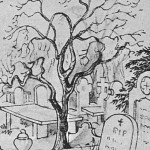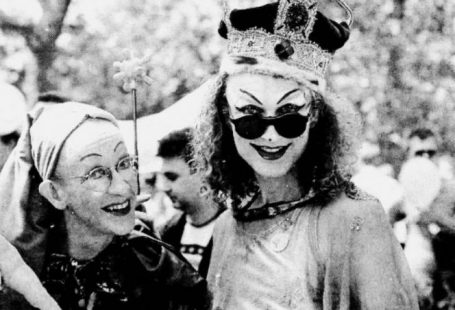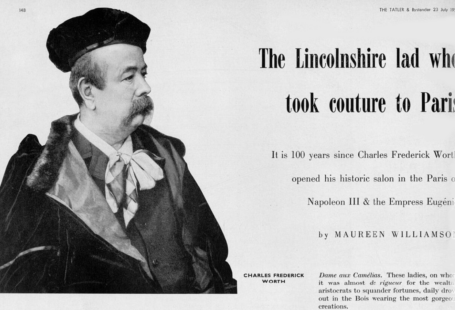
Last night on Who Do You Think You Are? comedian Greg Davies, best known for his role on The Inbetweeners and Cuckoo, explored his Welsh ancestry. Through newspapers, Davies discovered that his great-grandfather was taken to court to pay child maintenance, and his great-great-grandfather was killed in a tragic accident. Finally, Davies discovered he was descended from royalty. Using The British Newspaper Archive, we will delve deeper into the Davies family stories and extract more details about the lives of Davies’ ancestors.
The British Newspaper Archive holds over 30 Welsh newspaper titles including three Welsh language newspapers: Baner ac Amserau Cymru, Y Genedl Gymreig, and Y Goleuad. These titles have been digitised in the same way as our English language titles, which means you can search in Welsh. For example, you can search for ‘llys Ynadon’, the Welsh word for magistrate court, and get thousands of results.
At the beginning of this week’s Who Do You Think You Are?, Greg Davies made it clear he wanted to explore the paternal side of his family tree and to reveal a family secret. It didn’t take too long to get into the details of his family history and find that particular family secret. The father of Greg Davies’ grandmother Edith was unknown. She was born in 1904 and her mother was Elizabeth, but the father’s name was left blank on the original certificate. Alerted to his grandmother’s illegitimacy by the blank space where her father’s name should have been, the next step was to go Portmadog, Edith’s birth place, to discover more.
Portmadog is a coastal town in North Wales at the foot of the Snowdonia mountain ranges. The town developed in the 19th century by exporting slate to England and the rest of the world and holds a rich maritime tradition. In Portmadog, Davis discovered in the local newspapers that Elizabeth, on more than one occasion, brought charges against William Owen for not paying maintenance costs for his child. This small newspaper article had revealed Greg Davies’ grandfather’s name, a name long missing from his family tree!
Illegitimacy case were often recounted in the local newspapers as part of the magistrate court or petty session reports. Illegitimate ancestors can be found in all families, regardless of the family’s religion or class. Here is one example of a case reported in the North Wales Chronicle on 13 April 1841.

A large farmer and cattle dealer, Mr Owen (not Davis’ Mr Owen) was brought before the Merioneth petty sessions for the maintenance of the illegitimate child of Dorothy Richards. The particulars were ‘hardly fit for publication’, but the magistrates ruled unanimously in support of Dorothy Richard’s claim. For a single mother, it was an unnerving and embarrassing process to have to appear before court to claim for child maintenance. Even this report did not print the details of the case, which we surmise told particulars about Owen and Richard’s relationship.
As the episode continued, we found out that William Owen was born in Tremadoc, only 1.4 km north of Porthmadog. His parents were Elizabeth and Evan Owen. Unfortunately, William’s mother died in child birth, and William was sent to live with his maternal grandparents. Through more newspaper reports, Owen was revealed as a ‘jack the lad’ — meaning a brash and cocky young man — and a drinker, a strong contrast to his deacon father, Evan. Evan remarried and had more children, 3 daughters. He was a successful farmer and lived only seven miles from his estranged son. While the story of Davies’ great-grandfather’s life was unfolding, Davies hoped that William would be reunited with his father, but a newspaper revealed a tragic end for Evan. Evan Owen and Ann Hughes were travelling to the Portmadog market when their horse received a fright and backed the trap off the side of a bridge on 3 August 1920. The two were swept away into the current and drowned. A doctor witnessed the accident and was able to pull Evan to shore and tried unsuccessfully to resuscitate him.
We found that the accident was reported in multiple newspapers, and by adding all the accounts together, we discovered even more facts about the accident than what was revealed in last night’s episode. What we didn’t find out last night was that Evan and Ann were also travelling with a young boy named Jones who was able to jump from the cart before it fell from the bridge into the river and survived. When the trap fell to the water, 68-year-old Dr Paul Talerton, of Manchester, was standing on the Carnarvonshire side of the bridge fishing. Talerton witnessed the accident and immediately jumped into the water and swam a great distance to rescue the pair, but the current was too strong. He was able to use one of the fishing rods to pull Evan ashore. Once the trap had hit the water, the horse broke free and swam ashore.
This is an excellent example for expanding your newspaper search outside of your region. If you only searched within the North Wales newspapers, you would have missed all these additional details found in the Western Gazette, Nottingham Evening Post, Lichfield Mercury, and Hull Daily Mail.

By the time of Evan’s death, William had moved to South Wales with his new family and away from his daughters Edith. From the 1911 Census, we can see that William Owen settled in Stanleytown, Glamorgan. Stanleytown is located along the Rhondda valley, where thousands worked in the coal mines. Mining was the main industry in South Wales from the 19th century through to the mid-20th century. The last working mine in Stanleytown closed in the 1960s. In 1913, Wales produced 57 million tons of coal from 620 mines with around 232,000 miners. Working within the mining industry was hard, gruelling work. Safety regulations were inadequate and the working days were long. The dangerous work led to numerous mining accidents. Between 1850 and 1920, there were over 40 mining accidents in South Wales, which resulted in the deaths of about 3,000 miners. These conditions often led to disputes between the miners and the owners of the mines. In this edition of the Aberdeen Press and Journal, you can see the frustration of the miners lead to violent riots.

In 1920, the Illustrated London News printed a number of photographs and illustrations from mining towns while covering mining strikes. This front page image of a miner gives us an idea of how Greg Davies’ great-grandfather would have dressed for work. On the next page, you can find an image of a Rhondda colliery, probably similar to the one William Owen worked in. You can also find images of the miners on strike.


Luckily for Greg Davies, this journey introduced him to a whole new side of his family tree he never knew about before. He now understood more about his great-grandfather’s life and found a close connection to his great-great-grandfather. At the end of the episode, Davies returned to Evan Owen’s home to discover one more revelation, that the generations of Owens who lived on that land were descendants of Owain Gwynedd, the King of Gwynedd from 1137 and the first Prince of Wales. Not a bad end to a genealogical search.






